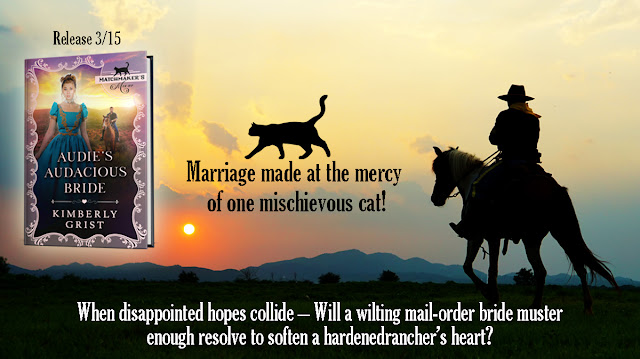
Hibbard vs Hibbard
Susan Hibbard, who invented the feather duster in 1876, disputed her husband’s claim to the patent in court. While details of the case are vague, it was reported that Mr. Hibbard could not define certain novel features of the invention. Mrs. Hibbard was granted the patent, opening the doors for future women inventors to apply for patents in their own names.

Too Much Muscle
The first “calculating machine,” invented in 1885 by William S. Burroughs, gave wildly different answers depending upon how hard you pulled the handle to make the calculation. Burroughs patented an improved calculator in 1893.

Jail Time Inspiration
When William Addis of Whitechapel, England, was jailed in 1770 for inciting riots, he still wanted to keep himself presentable. Not fond of using the common method of rubbing a rag with soot and salt on his teeth, he carved a small handle from a bone and inserted boar bristles held in place by wire. After leaving prison, Addis successfully mass-produced his invention in 1780.

He died a wealthy man in 1808, leaving the business to his son, William. By 1840, toothbrushes were mass-produced in England, France, Germany, and Japan. Pig bristle was used for cheaper toothbrushes and badger hair for the more expensive ones.

Addis' son began exporting products abroad to the US in the 1880s. The company retained its family ownership until 1996 under the name Wisdom Toothbrushes. The company now manufactures 70 million toothbrushes per year in the UK.

The first US Patent for a toothbrush was filed in 1857 by H.N. Wadsworth (US Patent No. 18,653) Mass production of toothbrushes (These brushes still used animal hair) began in the United States thirty years later.

He died a wealthy man in 1808, leaving the business to his son, William. By 1840, toothbrushes were mass-produced in England, France, Germany, and Japan. Pig bristle was used for cheaper toothbrushes and badger hair for the more expensive ones.

Addis' son began exporting products abroad to the US in the 1880s. The company retained its family ownership until 1996 under the name Wisdom Toothbrushes. The company now manufactures 70 million toothbrushes per year in the UK.

The first US Patent for a toothbrush was filed in 1857 by H.N. Wadsworth (US Patent No. 18,653) Mass production of toothbrushes (These brushes still used animal hair) began in the United States thirty years later.
The First Can Opener-A Hammer and Chisel
Tin cans for food preservation were invented in 1810. However, the can opener wasn’t patented until almost fifty years later in 1858.

The first cans could be as thick as 3/16 of an inch and were too thick to be opened with anything but a hammer and chisel. The first can opener was patented by an American inventor Ezra J. Warner on January 5, 1858, when iron cans were starting to be replaced by thinner steel cans.

Who Needs a Sewing Machine When You Have A Safety Pin
American mechanic Walter Hunt invented the safety pin in 1849. He also built America’s first sewing machine in 1834. However, he didn’t pursue a patent at the time because he thought the device would put hand-sewers out of work.

The Reason I Type So Slowly

The Reason I Type So Slowly
And my favorite, typewriters, were invented in 1868, and the QWERTY keyboard layout was designed in 1878 to slow down typists to keep typewriter keys from jamming together. (Now I know the reason why I type so slowly.)


In my upcoming release, Audie's Audacious Bride, both my hero and heroine's life is influenced by a strange event causing a mix-up of an extraordinary nature. Can this mismatched couple blaze a trail to form a partnership of the romantic kind? https://www.amazon.com/dp/B09S19MFYD
https://www.amazon.com/dp/B09S19MFYD
Coming Soon and Now Available for Pre-Order
 https://www.amazon.com/dp/B09S19MFYD
https://www.amazon.com/dp/B09S19MFYDWhen disappointed hopes collide – Will a wilting mail-order bride muster enough resolve to soften a hardened rancher’s heart?
Faith Fairchild is destitute and has no other choice but to comply with her late father’s last wish—to find a husband through a matchmaking service. As a pastor’s daughter, she trusts his advice but believes hard work and commitment combined with a bit of romance will give her the desired goal of “happily ever after.”Her application reads, “I’m at my best when surrounded by others. My ideal husband will live in town. Perhaps a tailor, shopkeeper, or someone running a diner. I am a hard worker, love to cook and sew, and would love the opportunity of working side by side as partners.”
Ranch owner Audie Harris has one single goal – to make the family ranch a success and secure it for future generations. He needs a wife who understands that the isolation and hard work of cattle farming are necessary to achieve his goal. With a young sister to raise and numerous ranch hands to feed, his application for a suitable wife reads, “a woman of robust stock, a good cook, and willing to produce a houseful of children.”
What does he get? “I asked for a practical woman with ranch experience, and they send me a Southern Belle who has more petticoats than she does sense.”
Can this mismatched couple blaze a trail to form a partnership of the romantic kind?
Connect with Kimberly:
Sign up for my newsletter: https://kimberlygrist.com/contact/
Bookbub: https://www.bookbub.com/profile/kimberly-grist
Facebook: https://www.facebook.com/FaithFunandFriends/
Twitter: https://twitter.com/GristKimberly
Amazon Author Page: https://www.amazon.com/Kimberly-Grist/e/B07H2NTJ71


Fascinating! Thanks for sharing.
ReplyDelete